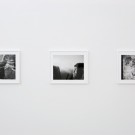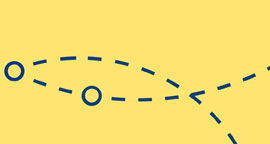Centre for Contemporary Culture at Palazzo Strozzi
Palazzo Strozzi
Jo Ractliffe

My tent at Longa, from “As Terras do Fim do Mundo”, 2009
Stampa manuale ai sali d’argento / Hand-printed silver-gelatin print
Courtesy The Walther Collection and Stevenson Gallery
© Jo Ractliffe
Warning: A non-numeric value encountered in /var/www/vhosts/strozzina.org/httpdocs/admin/wp-content/plugins/lightbox-gallery/lightbox-gallery.php on line 443
- JO RACTLIFFE
As Terras do Fim do Mundo, 2011 Stampe a getto d’inchiostro su carta fine art / Inkjet prints on fine art paper Courtesy The Walther Collection, Neu-Ulm © CCC Strozzina, Palazzo Strozzi, Firenze / photo: Martino Margheri
- JO RACTLIFFE
As Terras do Fim do Mundo, 2011 Stampe a getto d’inchiostro su carta fine art / Inkjet prints on fine art paper Courtesy The Walther Collection, Neu-Ulm © CCC Strozzina, Palazzo Strozzi, Firenze / photo: Martino Margheri
- JO RACTLIFFE
Mural, FAPLA base, Chinguar, from “As Terras do Fim do Mundo”, 2010 Stampa manuale ai sali d’argento / Hand-printed silver-gelatin print Courtesy The Walther Collection and Stevenson Gallery © Jo Ractliffe
- JO RACTLIFFE
My tent at Longa, from “As Terras do Fim do Mundo”, 2009 Stampa manuale ai sali d’argento / Hand-printed silver-gelatin print Courtesy The Walther Collection and Stevenson Gallery © Jo Ractliffe
- JO RACTLIFFE
As Terras do Fim do Mundo, 2011 Stampe a getto d’inchiostro su carta fine art / Inkjet prints on fine art paper Courtesy The Walther Collection, Neu-Ulm © CCC Strozzina, Palazzo Strozzi, Firenze / photo: Martino Margheri
- JO RACTLIFFE
As Terras do Fim do Mundo, 2011 Stampe a getto d’inchiostro su carta fine art / Inkjet prints on fine art paper Courtesy The Walther Collection, Neu-Ulm © CCC Strozzina, Palazzo Strozzi, Firenze / photo: Martino Margheri
- JO RACTLIFFE
As Terras do Fim do Mundo, 2011 Stampe a getto d’inchiostro su carta fine art / Inkjet prints on fine art paper Courtesy The Walther Collection, Neu-Ulm © CCC Strozzina, Palazzo Strozzi, Firenze / photo: Martino Margheri
- JO RACTLIFFE
As Terras do Fim do Mundo, 2011 Stampe a getto d’inchiostro su carta fine art / Inkjet prints on fine art paper Courtesy The Walther Collection, Neu-Ulm © CCC Strozzina, Palazzo Strozzi, Firenze / photo: Martino Margheri
- JO RACTLIFFE
As Terras do Fim do Mundo, 2011 Stampe a getto d’inchiostro su carta fine art / Inkjet prints on fine art paper Courtesy The Walther Collection, Neu-Ulm © CCC Strozzina, Palazzo Strozzi, Firenze / photo: Martino Margheri
JO RACTLIFFE (South Africa, 1961)
As Terras do Fim do Mundo, 2011
Inkjet prints on fine art paper
Courtesy The Walther Collection
Between 2009 and 2010, the South African photographer Jo Ractliffe produced a work dedicated entirely to the portion of Angolan territory that was the theatre of the so-called Border War, fought in various stages by Angolan, Namibian, South African and Cuban troops from the middle of the 1960s to the end of the 1980s. Ractliffe ventured for long periods into the heart of Angola, accompanied by soldiers who had fought in those areas: the result of her work is the series entitled As Terras do Fim do Mundo (lands at the end of the world), the name given by Portuguese colonists to the harsh, inhospitable inner reaches of Angola, far from the capital Luanda, the real nerve centre of the entire country.
Shot in an austere black and white, the photographs follow one another, always leaving the onlooker with a sense of expectation, of something not finite. A strong visual prop is almost always missing, the shocking icon around which a story can be built based on the evidence. Ractliffe photographs the voids left by the war in a natural environment that is in itself already desolate. The void is never total, however; it is inhabited by a presence that is sometimes evident, like the carcass of a helicopter or a mural painted on a house, and sometimes hidden or camouflaged, like an abandoned scarecrow or the remains of bunkers in the middle of the desert. Describing her work while in the field, the artist wrote, “I feel as if I am in a place that has abandoned itself, is indifferent to the collapsing of time and history. Most of the people have left, and the animals are also gone, slain by various armies or trapped by poachers. And the millions of landmines scattered across the country have left the land unattended and desolate, an open-air depot for the vestigial stock of war.”
The project is organized into three thematic sections relating to specific places. The first is associated with Cuito Cuanavale, the site of the famous battle between the Angolan army supported by the Cubans and the South African invasion forces. What remains of that epic battle, above all, are the numerous landmines still present on the ground, indicated by crude markings set up by the few people that still frequent the area, and some memorials and mass graves, like those commemorating the massacre of Cassinga that took place in 1978, which constitutes the second section of the series. The third section – the most represented in the selection for this exhibition – focuses on traces of the Cuban presence in the area: buildings for troops, air-raid shelters, monuments. In all of the images, one can see trenches by now almost unrecognizable, fading murals, monuments long since corroded and falling apart: nature is slowly reclaiming its dominion over the rule of men, validating the metaphor of the transience of the very concepts of nation and frontier associated with given historical situations and conditions that time forever renders more difficult to recognize and comprehend.
Jo Ractliffe (1971, South Africa) has, since 2007, focused her work on the aftermath of the war in Angola, a conflict in which South Africa was intricately involved. Following Terreno Ocupado (2008) and As Terras do Fim do Mundo (2010), her recent work, The Borderlands, looks at spaces within South Africa that were caught up in the mobilisation and aftermath of that war. Recent exhibitions include: The Borderlands, Stevenson Gallery, Cape Town (2013); Present Tense, Fundação Calouste Gulbenkian, Lisbon (2013); Transition: Social Landscape, Recontres d’Arles (2013); My Joburg, La Maison Rouge, Paris (2013); Rise and Fall of Apartheid: Photography and the Bureaucracy of Everyday Life, International Centre of Photography, New York (2012); Making History, Museum Moderne Kunst, Frankfurt (2012); Appropriated Landscapes, Walther Collection, Ulm, Germany (2011),Topographies de la Guerre, Le Bal, Paris (2011). Ractliffe teaches at Wits University where, together with Rory Bester, she runs PhotoFocus, a pedagogy platform for taking photography education across disciplines, histories, spaces and experiences. She also teaches at the Market Photo Workshop and is currently a Fellow at the Centre for Curating the Archive at the University of Cape Town.
« back to exhibition
| M | T | W | T | F | S | S |
|---|---|---|---|---|---|---|
| « Jun | ||||||
| 1 | 2 | 3 | 4 | 5 | 6 | |
| 7 | 8 | 9 | 10 | 11 | 12 | 13 |
| 14 | 15 | 16 | 17 | 18 | 19 | 20 |
| 21 | 22 | 23 | 24 | 25 | 26 | 27 |
| 28 | 29 | 30 | 31 | |||















